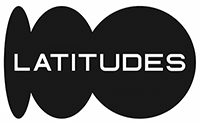Denzva
Store Review (0)PRESENTED BY : Warren Editions
| Frame | None |
|---|---|
| Edition Size | 10 |
| Medium | Hardground- and softground etching on Zerkall Litho 300gsm |
| Location | Warren Editions |
| Height | 20.00 cm |
| Width | 25.00 cm |
| Artist | Janet Mbirimi |
| Year | 2023 |
Janet Mbirimi lives in Cape Town with her two daughters and husband. She grew up in the rural village Wedza (or Hwedza) in Zimbabwe. Wedza is in the province of Mashonaland East, located south of Harare.
Mbirimi works as a printer at the print studio, Warren Editions. Her exposure and intense involvement in printmaking at the print studio led her to explore her own ‘language’ in etchings, woodcuts and monotypes. Her childhood geographic landscape is inextricably linked to her landscape of memories.
For her etching Denzva she used hardground- and softground etching. Hardground etching, is a way of making fine line work. The best ground for line work is beeswax mixed with asphaltum and gum rosin. The plate can be handled without the ground being accidentally nicked. The plate is degreased, set on a heated surface and the ground, which comes in a ball, is spread onto it and then spread out evenly with a rubber brayer. When the wax cools, the plate is smoked with the flame of tapers. Thereafter, lines can be drawn through the ground with any pointed tool – the traditional one is a pointed metal cylinder called a needle. The resulting print is called a hardground etching. In using hardground, the artist can draw smoothly – all he or she needs to do is break the wax. The acid does the rest. The longer the plate is in the acid the deeper the bite and the stronger the lines will print.
Softground etching lines look different from hard ground lines in that they are crumbly-looking rather than wiry and aren’t even from end to end. Moreover, tonal areas resembling pencil shading can be made, and impressions from flat objects such as fabric, paper, and foil can be achieved through the medium. Softground is essentially beeswax mixed with petroleum jelly or tallow and a small amount of asphaltum; the wax and petroleum jelly or tallow retains the ground’s softness, allowing for a crisp impression of anything pressed into it.
The character of the line change depending on the amount of pressure used in drawing. More pressure removes more wax, so where the artist pressed harder, the tooth-creating marks are more prominent and closer together than in the areas where only light pressure was used. Using coarsely-grained paper gives coarse-textured lines and fine paper fine lines. In general, soft ground lines look like lines made by the drawing instrument – a clutch pencil, HB pencil, ballpoint pen or any other object on which pressure can be applied.










